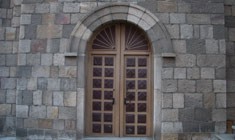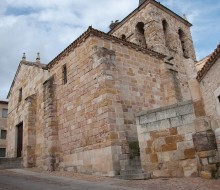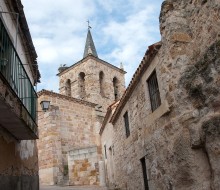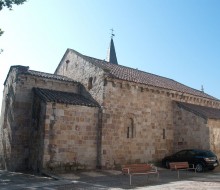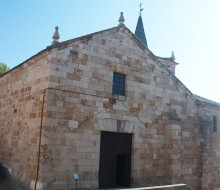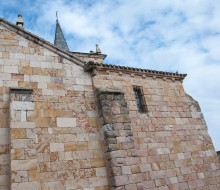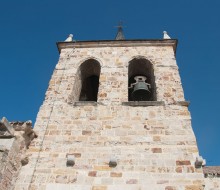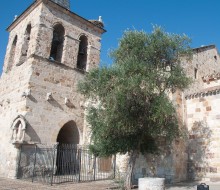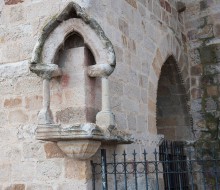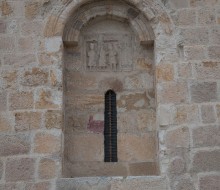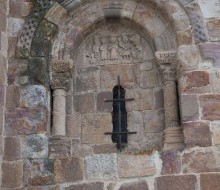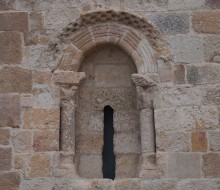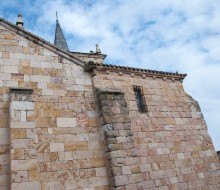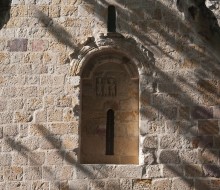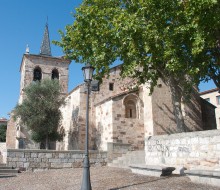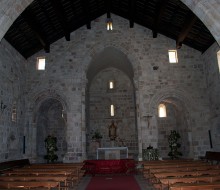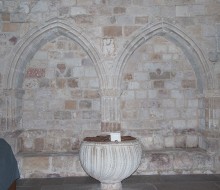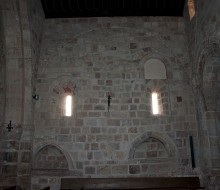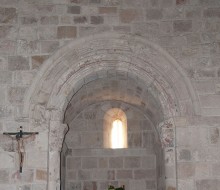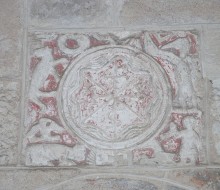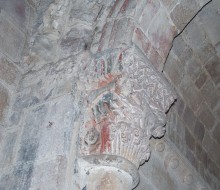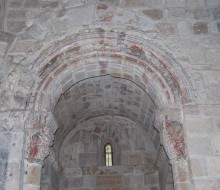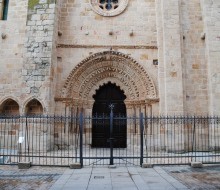Church of San Cipriano
Zamora
Church of San Cipriano
Zamora11th century
Next to one of the best viewpoints, there is one of the oldest churches in the city. It has triple square apse and the original southern door has been preserved as well as the interesting interior capitals.
It dates from the end of the 11th century, but it was rebuilt during the 13th, 14th and 18th centuries. From the registration of its inscription is deduced that it was rebuilt in 1157. The transverse arch, the barrel vault and the arch of the chapel of the Epistle, the southern doorway and the tower with the passage were built at that time. It forms part of the architectural ensemble that some authors stand out for being special and exclusive. Three rectangular apses in the head part and the decoration of the interior capitals characterize this Romanesque temple which has been subsequently altered.
The gable and northern wall were renovated in the 18th century. The old basilica floor plan was replaced by a single nave with a very large and plain head and some added chapels, keeping the triple straight header, typical of Romanesque of Zamora.
The head part is the original one, and there are numerous reliefs from an earlier-time temple, being remarkable for the window in the Capilla del Evangelio (Gospel Chapel). It has three square chapels, being the central chapel wider than the side ones.
The southern front, the only one which is original, dates from the mid-12th century and the doorway is very simple. On this side stands the tower, and beside it, it is the most interesting doorway, that consists of three semicircular archivolts. On the southern elevation, embedded in the wall there are many eccentric pieces of the original temple, like a mermaid, a blacksmith named Bermudo working on an anvil, San Pedro (St. Peter) wearing biretta and the corresponding key, a Chi-Rho, a monster with seven heads and the scene of Daniel in the Lions' Den.
The exterior decoration is completed with the typical modillions with human figures and remains of checkered ornament in the eaves. Due to the stone wearing away, the carved scenes cannot be made out.
Inside the temple, can be seen a central nave and two aisles which were renovated during the 13th century. There are several interesting capitals too, both figurative and those which depict history, as is the case of the Main Chapel. The capitals have motifs such as plants, Biblical scenes as the Adoration of the Magi, or the Expulsion from Paradise.
This church was declared a National Monument in 1931.
Exterior de la Iglesia de San Cipriano
La fachada sur, la única original, es de mediados del siglo XII y su portada es muy sencilla. En este costado se levanta la torre y, junto a ella, una portada formada por tres arquivoltas semicirculares. Al sur se conservan numerosas piezas del templo primitivo como una sirena, un herrero llamado Bermudo trabajando sobre el yunque, San Pedro con bonete y la correspondiente llave, un crismón, un monstruo de siete cabezas y la escena de Daniel en el foso de los leones. La decoración exterior se completa con los habituales modillones con figuras humanas y restos del ajedrezado en el alero. Debido al desgaste de la piedra no se descifran bien las escenas que se representan.
Interior de la Iglesia de San Cipriano
En el interior se aprecian tres naves reformadas en el siglo XIII. Cuenta con varios capiteles interesantes, tanto figurativos como historiados, como es el caso de la capilla mayor. Los temas de los capiteles son vegetales, escenas bíblicas como la Adoración de los Reyes o la Expulsión del Paraíso.
La antigua planta basilical se sustituyó por una sola nave de cabecera plana muy amplia y algunas capillas añadidas, conservando la triple cabecera recta propia del románico zamorano. La cabecera es la original y en ella hay numerosos relieves procedentes de un templo desaparecido, haciéndose notar la ventana de la capilla del Evangelio y tiene tres capillas cuadradas, siendo la central más amplia que las laterales.
GET DIRECTIONS
ROUTES
OPENING HOURS AND VISITS
From 1st October until 6th January:
From Monday until Sunday: from 10:00 to 14:00 and from 16:30 to 18:30.
Closed on Tuesday.
From 5th March until 30th September:
From Monday until Sunday: from 10:00 to 13:00 and from 17:00 to 20:00.
Closed on Tuesday.
GENERAL INTEREST SERVICES
Tourist offices:
- Local tourist office: It is located at 5, Arias Gonzalo Square. Tel. +34 980 533 694
- Castilla y León tourist office: It is located at 1, Príncipe de Asturias Avenue. Tel. +34 980 531 845
- Provincial tourist office: It is located at Viriato Square. Tel. +34 980 534 047
Local police: Tel. +34 980 531 245
Civil Guard (police with responsibilities outside towns): Tel. +34 980 521 100
Emergency telephone numbers: 112
- Virgen de la Concha (Hospital): Tel. +34 980 548 212
Bus station: Tel. +34 980 521 281
Train station: Tel. +34 980 521 110
Taxi: Tel. +34 630 630 630
Civil defence: Tel. +34 980 536 190
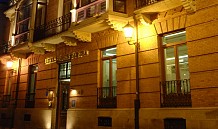
Hotel Horus
Zamora
El Hotel Horus, abierto en el año 2001, tiene un total de treinta y ocho habitaciones dobles que se dividen entre cuatro…
More info